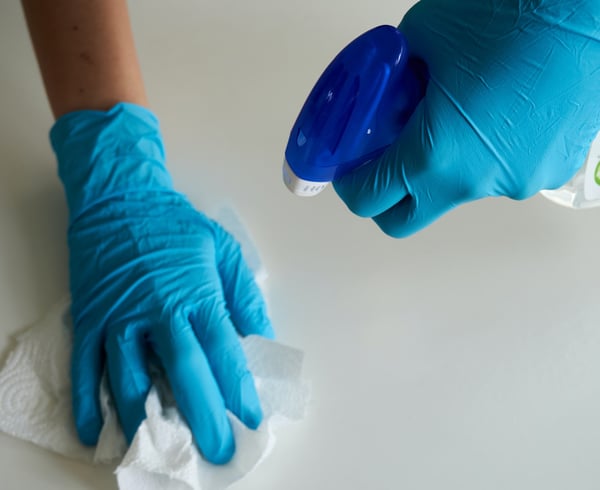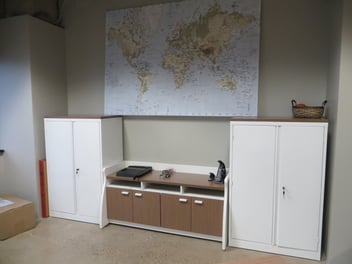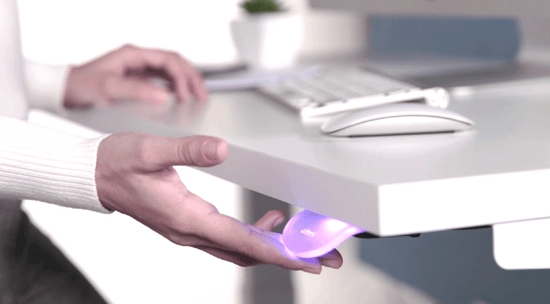Office furniture care and maintenance: Make your investment worth.
Buying office furniture is not only a necessity, but under the right circumstances, it can also be a quite profitable investment; however, a flawed maintenance plan, and neglect, can severely reduce its performance and lifecycle.
Below we list a series of updated critical tips, taking COVID-19 in mind, to create a proper maintenance plan, which will help get the most out of your investment.
Quality furniture
First of all, why pinch pennies if it costs you dollars? Purchasing low-quality office furniture may save you some money in the short term, but you end up paying more in the long run. Office furniture of proven quality as those from Gebesa, known for their functionality and durability, are also made with materials and finishes that make maintenance effortless.
If you opt to acquire low-quality furniture, deterioration will become evident after a short period, and replacements will soon be needed.
Synthetic materials
Although it is recommended to consult the specifications of each product, it is generally recommended to use a cloth soaked with water and mild detergent; and then dry the surface with a dry cloth.
It is not advisable to apply liquid cleaners directly to the surface of your furniture, especially if they are corrosive or abrasive; instead, use a damp cloth occasionally to clean synthetic material to remove dust and dirt and create a shine.

Wood finishes
A neutral detergent or a specially designed wood cleaner is advised to clean and care for wood finishes’ appearance and integrity.
Likewise, use a cloth or rag, and avoid sponges, since these could damage the surface material and the coating, allowing deterioration to set in.
In ink stains or any other element that is not easily cleaned, alcohol can be used sparingly. You can also use commercial alternatives as long as they are without abrasive or corrosive agents.
Leather seats
Chairs and armchairs usually require a different type of cleaning. If it is a textile or leather finish, using the vacuum cleaner will help remove the excess dust and get into deep crevices, after which, use saddle soap or a leather cleaner to remove any stains.
For leather, it is also recommended to use a moisturizing liquid periodically to keep the leather supple. Any movable part should be greased or oiled to keep it in proper working order.
Metal furniture
The process of cleaning and maintaining metal furniture is similar to that of synthetic. However, after applying a wet cloth cleaning, you can rinse, but not over painted sections. Make sure to dry appropriately afterward.
It is important not to scratch or perforate any surface as oxidation can be quickly set in and shorten the piece of furniture’s lifespan.
Sunlight Protection
It is essential to check the specification for each piece of office furniture specifications. Some materials are susceptible to sunlight, and exposing them to it will continuously accelerate their deterioration.
Using blinds or arranging them so that they are out from direct sunlight will also be an excellent measure to extend their life cycle.
Make the cleaning and usage guidelines apparent.
One of the leading causes of the deterioration of furniture is not being used in an intended way. Tables and chairs should not be used as a step. This could not only damage the furniture but could also cause a workplace injury.
Through the daily use of furniture, everyday spills can take place. Ensure that employees know how to clean the furniture properly or dry the spill and contact maintenance immediately. Maintenance should also be contacted if there is any damage.
The COVID-19 factor
With the epidemic still underway, cleaning regulations have also become more rigorous. Therefore, more frequent cleaning is required, but different methods of disinfection need to be used.
According to the WHO regulations, bleach or alcohol should be used for surface disinfection. However, it is essential to use the proper proportions, in terms of dilution, for adequate sanitation and avoid damaging the furniture, as high concentrations can be caustic.
We recommend using an alcohol-based disinfectant for surface areas, as bleach tends too aggressive and could discolor the furniture.
To properly maintain your furniture, it is vital to know its properties. Have the office manager read and keep the guides to every piece of office furniture on hand. They should also schedule regular cleanings using those guides and the tips above to keep your office safe, functioning, and sanitary.





.webp?width=352&name=oficina-decoracion-otono-acogedor%20(1).webp)
